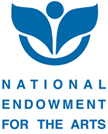Embroidery: Others |
|---|
 |
EO1: The methods used in this piece are typically associated with traditional Hmong women’s sashes. They would usually involve a row of three or four and are often sewn to a red or green sash. The motif utilized is a modified snail, meaning half of the snail is reversed so it does not look like the traditional snail design. The embroidery involves chain stitching on a pink cloth. The negative space forms a mountain motif. Other motifs include flowers and seeds used as decorations. Appliqué frames and borders were added.
By an unknown artist, 1990s, 12x12 cm |
Back to Top |
 |
EO2: Displayed here is the top panel for a baby carrier. The spiral motifs, called snails, are in orange, purple, yellow-green, and green. Bright colors are often used for baby carriers so whenever a mother carries her child on her back, bad spirits that might be attracted to the child to make it cry or become sick will be deceived into thinking it is just a colorful bird. The snails are sewn with chain stitches, the border strips with plain blanket stitches. The red, white, green, and black borders are only found in Green Hmong textiles and traditional attire.
|
Back to Top |
 |
EO3: This paj ntaub is embroidered onto a red cross-stitch fabric.The approach used involved running stitches to create a leaf frond which is the main motif. Inside each leaf frond is a white and blue cross decoration. The tapestry is decorated with four purple diagonal bars appliquéd onto the red cross-stitch fabric. White and purple appliqué borders are used to frame and
By Mee Lor, 1988, 16x15 cm |
Back to Top |
 |
EO4: The colors featured in this cross-stitch piece include red and green on a monk’s cloth in a maze motif, repeated four times in quadrants. The appliqué borders provide a complementary decoration to the maze colors.
By Bao Lee Yang, 1980s, 21x21 cm |
Back to Top |
EO5: This tapestry was embroidered on a cotton cloth. Typically, the elephant’s foot motif is sewn in reverse appliqué; however, here it is embroidered in chain stitches of pink, purple, orange, and green. The embellishments were also done in chain stitches. These are supposed to represent cucumber seeds or melon seeds.
By Lu Lee, 1988, 21x22 cm |
Back to Top |
 |
EO6: This piece is embroidered in cross-stitching on a black monk’s cloth. The frames are decorated with a ram’s horn motif in an intertwining design which has no meaning and serves only a decorative purpose. The motif inside the frames is the elephant’s foot design, decorated with star and mountains embroidery.
By Thip Lee, Laos, 2005, 43x48 cm |
Back to Top |
 |
EO7: This cross-stitch floral paj ntaub was sewn as a small tablecloth or wall hanging. It is one of the very few Hmong Archives paj ntaub from the Hmong in China, most likely from eastern Guizhou Province, home of the donor. Other than it has geometric and floral designs, there is little we know about it, and welcome your comments.
|
Back to Top |
 |
EO8: This embroidery provides an example of cross-stitch on a black monk’s cloth. The main motif includes negative space that was not embroidered. Also included is a complex bar with a square ends motif. At each corner is a square with a modified flower motif. Each of the four individual motifs resembles a heart motif, which as a whole, appear similar to an elephant’s foot. The complementary colors of yellow and black were used in the piece. The cross-stitch fence motif was used as a border decoration, with a yellow appliqué as an outer border.
By an unknown artist, 1980s, 11x10 cm
|
Back to Top |
 |
EO9: This piece consists of cotton thread cross-stitched on a monk’s cloth. It is a mirror artwork, meaning it is sewn in four identical quadrants. The motifs portrayed are snails, clams, mountains, and diamonds. A green fence decorates the red channel between the two blue frames. The two appliqués were completed with a plain blanket stitching on top of the monk’s cloth as borders. The colors used including green, yellow, red, and blue work together in a complementary fashion.
|
Back to Top |
 |
EO10: This paj ntaub square was done on pink monk’s cloth with cotton thread in a
By an unknown artist, 1980s, 19x20 cm
|
Back to Top |
Page 1 |



